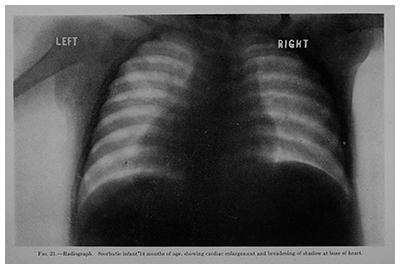Conditions Among Animals
Written by Kim van Alkemade

The question that remained was about the woman who had conducted the X-ray treatments that left the children bald. Doctor Mildred Solomon is a completely imaginary character, unlike her counterpart in the novel, Dr. Hess. He was inspired by the real Dr. Alfred Fabian Hess, who was attending physician to the Hebrew Infant Asylum during the years in which my novel is set, and where he conducted research into childhood nutritional diseases, including rickets and scurvy. His infant isolation ward was lauded in a 1914 article in the New York Times which stated that “the great advantage of the glass walls” was that “neither nurse nor doctor need pay many visits to the children under their care.”

In the novel, my character’s dialog is inspired by the real Dr. Hess’s own writing; in fact, the long passage Rachel reads in the medical library is a direct quote. And yes, he was married to the daughter of Isidor and Ida Strauss who went down on the Titanic.
The real Dr. Hess was often assisted by Miss Mildred Fish, coauthor on some of his nutrition studies and my inspiration, along with Dr. Elsie Fox, for Dr. Solomon. My research took me to the New York Academy of Medicine where I began to understand my character of Mildred Solomon more fully—the struggles she would have gone through, the pressures she was under, the goals to which she aspired. Dr. Solomon’s confrontation with Rachel gives the elderly woman a chance to defend her life’s work and her actions.

In the early twentieth century, the medical field was becoming more scientific and research became increasingly privileged. Amazing discoveries seemed to justify whatever methods were necessary to achieve the miraculous vaccinations and treatments that conquered disease and relegated conditions such as rickets and scurvy to the pages of American history. Today, the ethics of many such experiments have been condemned: the testing of polio vaccine on children in an orphanage; the study of untreated syphilis in prisoners; the sterilization of people who are impoverished or intellectually disabled. Sadly, disenfranchised people have often been “material” for medical experimentation.
It seems impossible now, however, to look back on experiments like those conducted by Dr. Fox and Dr. Hess and not see them through the distorting lens of the Holocaust. When telling people what Orphan #8 is about, I have learned that saying the words “Jewish children” and “medical experiments” in the same sentence is almost guaranteed to elicit a remark about Nazis. It seemed inevitable that Rachel herself, looking back on her childhood, would draw the same comparison, and only fair to allow Dr. Solomon to defend herself from these charges.

